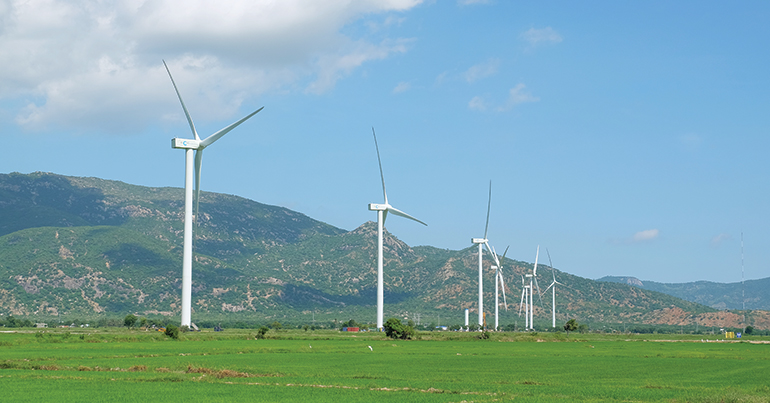Renewable energy prices have never been more competitive. But without clear support from the public sector, a sustainable future for Cambodia’s next generation may remain frustratingly out of reach
 As Cambodia’s neighbours continue to invest in cheap renewable technologies as clean power prices plummet, the Kingdom has a clear path ahead if it is to provide affordable green electricity to future generations.
As Cambodia’s neighbours continue to invest in cheap renewable technologies as clean power prices plummet, the Kingdom has a clear path ahead if it is to provide affordable green electricity to future generations.
Olivier Duguet, Chief Executive Officer at independent renewable power producer The Blue Circle, said that priority access to the power grid for renewable technology was the next step in Cambodia’s journey towards a clean energy future.
“If we take the example of what’s happening elsewhere in the world, and especially in Europe, the shift to renewables normally is helped greatly by giving to the green electrons coming out of any renewable sources priority access to the grid, and priority selling to the grid,” he said.
While Cambodia has long looked for hydropower to meet its renewable energy needs, Duguet said, public support for promising wind and solar projects is urgently needed if the Kingdom is to strike the right balance between old and new energy sources.
“Coal is still a big part of the energy mix, and if you want to diminish the role of coal going forward, green electrons have to have a priority,” he said. “Because renewables are intermittent by nature – we are dependent on the sun, the rain, and the wind – and the fact that we cannot store energy yet means that we need to have that constant access to the grid and that constant take-or-pay agreement with the grid operator to take all our electrons when they are produced. That’s the backbone of all the regulations put in place by all countries that want to have a larger penetration of renewables.”
Gilles Beau, Chief Development Officer at The Blue Circle, said that a sound regulatory framework was essential if Cambodia was to embrace renewable energy.
“We have the keys, and now we have to unlock the technical and to unlock the regulatory,” he said. “The regulatory means putting in place a kind of framework, target volume, and ideally a feed-in tariff where you can develop projects with a relatively clear process. Only then you can have access to lower cost financingand can start to build cheap renewables.”
Feed-in tariffs, which generally consist of allowing households and businesses that produce energy through renewable technologies guaranteed grid access, long-term contracts and cost-based purchase prices, have been used to promote investment in green energy across the world.
“In Vietnam there is a clear target in number of megawatts, a clear support mechanism, a feed-in tariff, where you’ve got a relatively clear framework on how to process – what are the different stages, what kind of conditions you will get and what are the prices you will get when you build a project,” Beau said. “You need to have this kind of certainty in order to accelerate the development project and attract private investment.”
Duguet was emphatic that renewable energy prices were already competitive with environmentally devastating fossil fuels. The only thing missing, he said, was a clear regulatory framework to jumpstart the Kingdom’s green energy revolution.
“The technology is there – we’ve got plenty of examples all the around the world of countries similar to Cambodia or very different to Cambodia – who have done it and who are doing it,” he said. “So there’s no reason why Cambodia can’t do it.”

